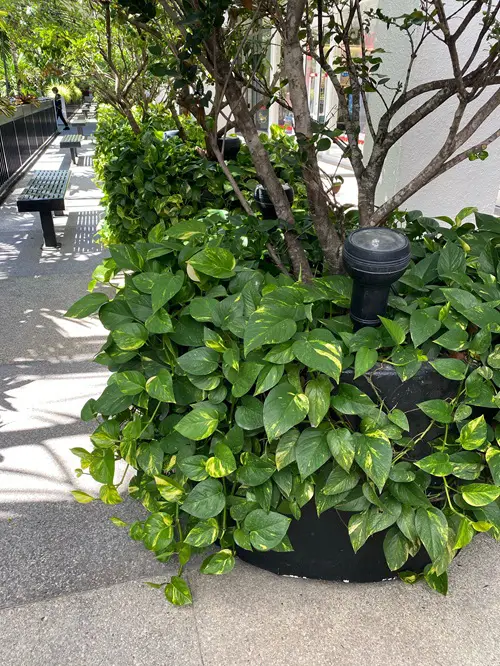Want to make the most of your evening stroll? You need these Outdoor Plants that Improve Air Quality and breathability!
More greenery means more oxygen! But did you know some plants even filter out contaminants and allergens? They create a space that is easy on the eyes, lungs, and mind. We share the best outdoor plants that improve the quality of the air you breathe!
Outdoor Plants That Improve Breathing
1. English Ivy
Botanical Name: Hedera helix
Native to Europe, more specifically, Scandinavia, English Ivy is a colossal vine reaching up to 80 feet tall. Its glossy, palmate, greenish-white leaves crawl along the forest floor or trail along tall trees. This vine can filter out mold and toxins from the air you breathe.
Growing well as ground cover or canopy that covers dull, exposed spaces, plant this invasive species away from crucial vegetation. Also, maintain distance, as its sap can cause irritation!
2. Hosta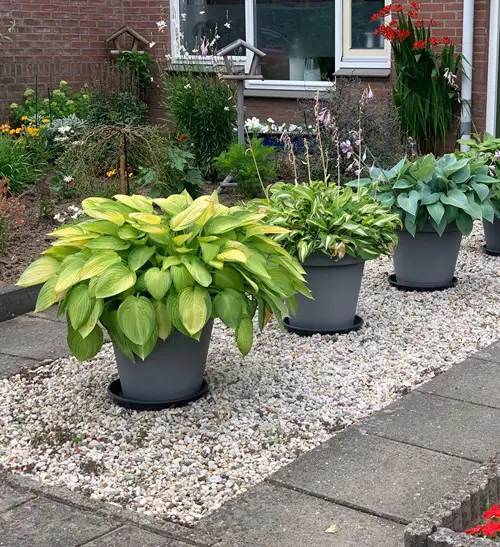
Botanical Name: Hosta spp.
Best for those with pollen allergies, Hosta is a shade-tolerant foliage plant that beautifies your landscape without driving you into bouts of sneezing. A member of the asparagus family, this ornamental perennial sports yellow to blue heart-shaped waxy leaves and trumpet-shaped lilac blooms.
This plant has low pollen that is not windborne, so it poses no harm to those with allergies or sensitive noses.
3. Areca Palm

Botanical Name: Chrysalidocarpus lutescens
One of the most potent air-purifying plants, the Areca Palm removes toxins and cools your surroundings. With stems emerging from a joint base and large, arching, compound green leaves, this plant can also be grown indoors within containers.
It removes toxins such as formaldehyde and other gaseous pollutants and even produces more oxygen than any other average plant. Outdoors, this plant can reach up to 30 feet tall and thrives in dappled sunshine and warm frost free climate.
4. Weeping Fig 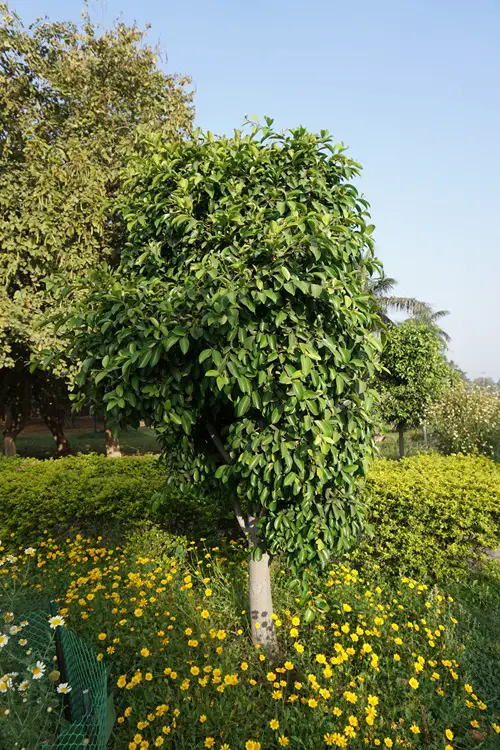
Botanical Name: Ficus benjamina
The gigantic weeping fig is also said to absorb pollutants and toxins from the air and improve breathing. Reaching a height of 50 feet, it has bendy, flexible stems and is coveted as a bonsai or a small tree if maintained well and trimmed regularly.
This hardy plant grows well indoors and in containers as well and enjoys full sun and complete shade both.
5. Hydrangea

Botanical Name: Hydrangea
Hydrangea is another flowering plant with a low pollen count and extraordinary color-changing blooms! These individual blossoms cluster in an umbrella-shaped corymb and contrast well against its large, green leaves.
The small amounts of pollen it produces are sticky and heavy and don’t fly rampantly, triggering allergies. Check out some more plants with a low pollen count for the allergic gardener!
6. Snake Plant
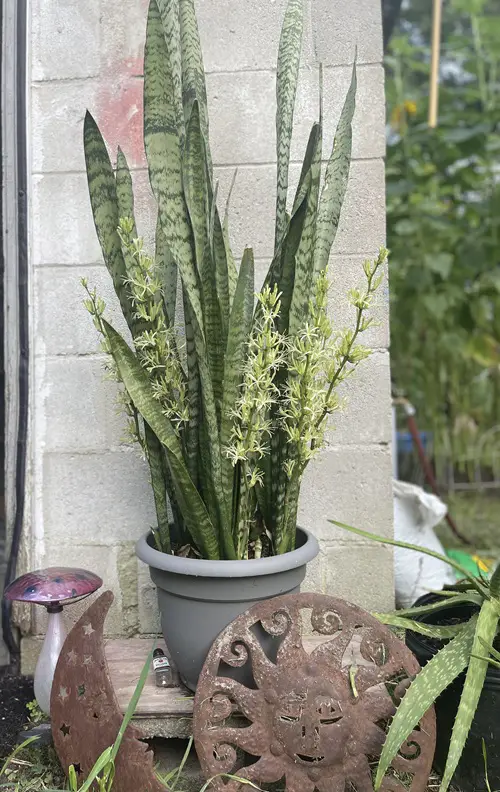
Botanical Name: Dracaena trifasciata
Also called mother-in-law’s tongue, this sword-like upright succulent is famously studied worldwide for its air-cleaning properties. Reaching up to 4-5 feet tall, it’s desired for its yellow and green patterned foliage, ease of growth, and resilience. It is also included in many plant-specific clean air studies as a specimen that sucks up toxic volatile organic compounds.
While a popular houseplant, it grows well outdoors in shade, sparse watering, and neutral to slightly acidic soil with good drainage.
7. Philodendron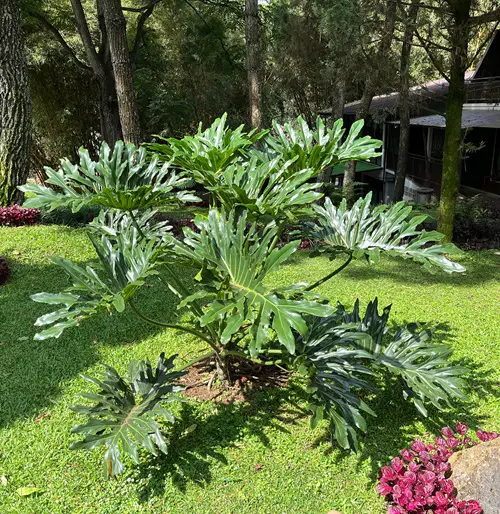
Botanical Name: Philodendron
You might have spotted many varieties of this popular genus potted in a room corner, but in the wild, some of the types unleash their true size and potential. Sporting humongous glossy green heart-shaped or variegated leaves that play a crucial role in filtering out toxins from the air, wild philodendrons can grow up to 30 feet tall!
8. Lady Palm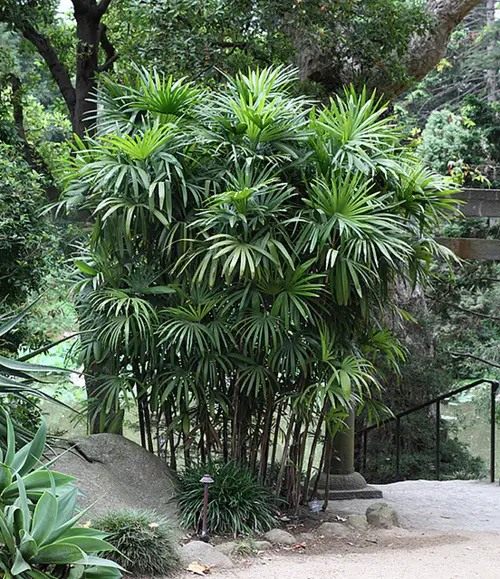
Botanical Name: Rhapis excelsa
Resembling a blown-up version of an origami masterpiece, this evergreen palm has large, glossy, fan-like, palmate leaves. First found in China, it can scale heights of over 15 feet with its brown, slender stem covered in coarse fibers. This plant is said to filter out all kinds of air toxins, including benzene, ammonia, and formaldehyde.
Grow it along your garden border or near your windows to filter out air as well as nosy neighbors, but be patient with this slow-grower. It thrives in slightly acidic soil, needs regular hydration during hot months, and prefers growing together with other plants.
9. Golden Pothos
Botanical Name: Epipremnum aureum
Next on our list of air-purifying outdoor plants is the Golden Pothos! Adored as a houseplant, this broadleaf, evergreen perennial grows over 40 feet long easily in the wild! With climbing and trailing vines, its heart-shaped golden green leaves are said to filter out pollutants, improving breathability.
Preferring bright, indirect light and modest watering, pothos grows well outdoors as both a climber and ground cover, if there is shade and warmth. Check out this article to keep your pothos supply ever-growing!
10. Chinese Evergreen
Botanical Name: Aglaonema
Native to Southeast Asia and New Guinea, the Chinese Evergreen is a member of the Araceae family, and another outdoor candidate said to improve air quality around it if grown in large numbers. Considered lucky in Asian cultures for centuries, this tropical perennial sports a crown of wide, lance-shaped leaf blades in silvery green patterns.
It thrives in filtered shade, ample humidity, and well-draining, slightly acidic to neutral, airy soil.
11. Boston Fern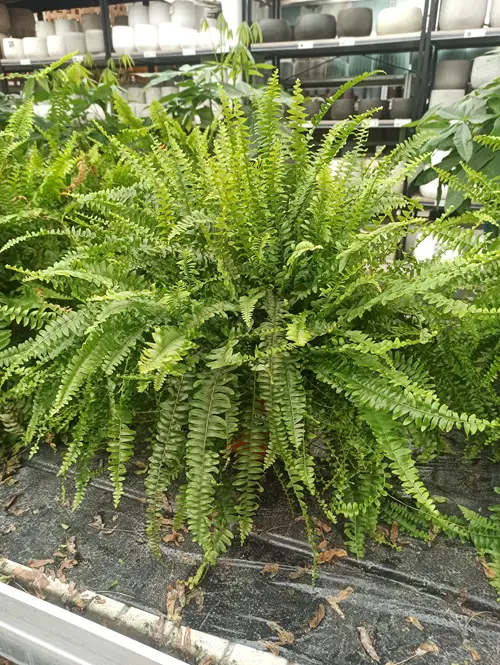
Botanical Name: Nephrolepis exaltata
This epiphytic fern certainly helps clean out the air you breathe but is also a dramatic and stylish addition to your outdoor landscape. With large cascading lime green fronds spilling out, it needs ample humidity and dappled light to grow well.
However, this fern cannot tolerate frost well, so plant in containers that can be brought indoors during winter.
12. Conifers
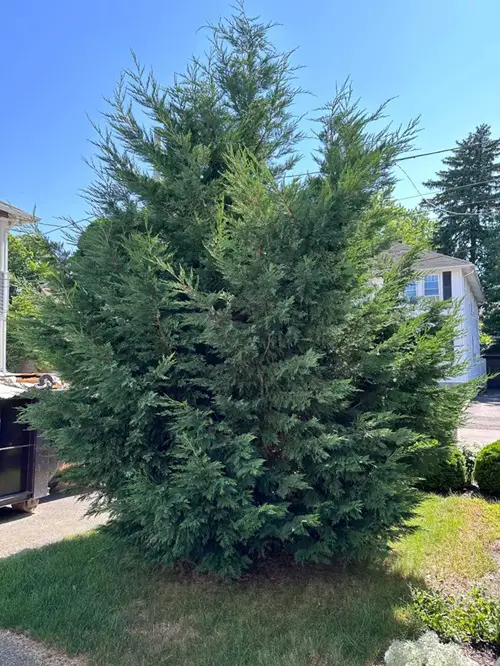
Botanical name: Pinophyta
Finally, we have conifers in our list of best outdoor plants that improve air quality. A hedge of conifers can act as a botanical shield from high quantities of pollen. They trap pollen particles in their dense needle-like foliage, much like a mesh filter on your window!
A BBC article cited conifers as being effective in reducing particulate matter in the air and their role as natural air purifiers!


